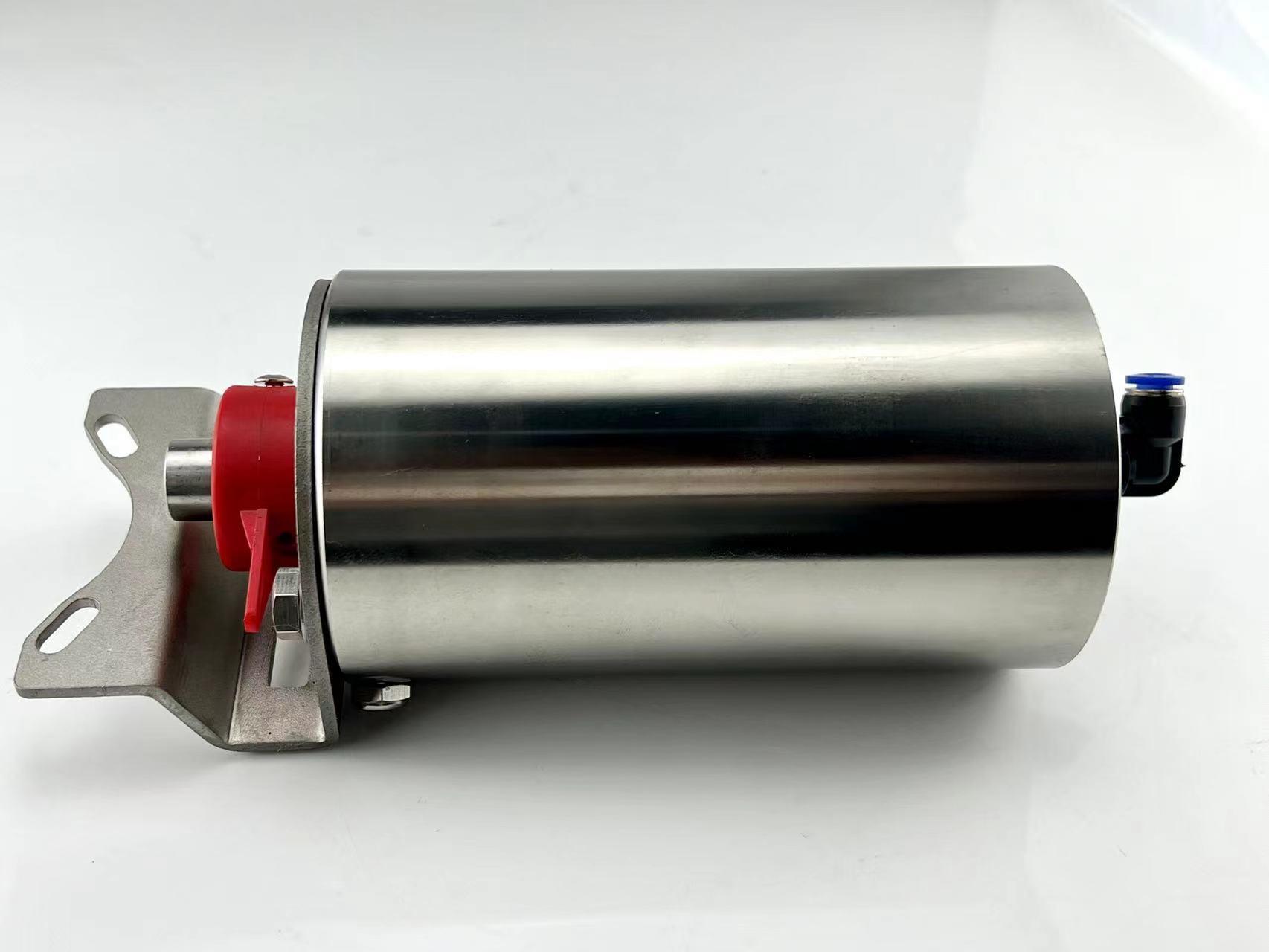
There are various types of pneumatic valves, and the following are some common classification methods and specific types:
Classified by valve structure form
Pneumatic ball valve: It uses a ball to rotate 90 ° around the axis of the valve stem to achieve opening and closing. It has the advantages of low fluid resistance, quick opening and closing, and good sealing performance. It can be used in high-pressure, large-diameter pipelines and is suitable for high viscosity, fiber containing, small solid particles and other media.
Pneumatic butterfly valve:
The butterfly plate rotates around the valve shaft to achieve the purpose of opening and closing. It has a simple structure, small volume, light weight, small opening and closing torque, easy operation, and good adjustment performance. It can be used for large-diameter pipelines, but its sealing performance is slightly inferior to ball valves. It is generally suitable for situations with low temperature and pressure, such as water supply and drainage, ventilation and air conditioning systems.
Pneumatic gate valve:
The gate moves vertically along the centerline of the valve seat to achieve valve opening and closing, with good sealing performance, low fluid resistance, and small opening height. It is suitable for cutting off or connecting media, especially for pipelines with low fluid resistance requirements and full diameter, such as oil and gas long-distance pipelines, but not suitable for frequent opening and closing situations.
Pneumatic globe valve:
It controls the opening of the valve by driving the valve disc up and down through the valve stem. It has a simple structure and good sealing performance, but has high fluid resistance and opening and closing forces. It is generally used in small-diameter pipelines and is widely used in pipelines for steam, water and other media. It can be used for precise control of flow and pressure.
Pneumatic diaphragm valve:
relying on an elastic diaphragm to isolate the valve body cavity from the outside world, the valve is controlled to open and close by driving the diaphragm up and down with compressed air. It has a simple structure, good sealing performance, no packing box, and will not produce external leakage. It is suitable for corrosive media, high viscosity media, and occasions that require strict hygiene, such as pharmaceuticals, food and beverage industries.
Pneumatic plug valve: mainly composed of a valve body and a plug. The plug is a conical or cylindrical plug with a channel, which controls fluid flow by rotating the plug. It has a simple structure and quick operation, and is commonly used in chemical pipelines with low requirements for flow control accuracy and low pressure.
Classified by pneumatic actuators
Thin film pneumatic actuator valve:
using a thin film as the driving element, compressed air acts on the thin film to generate thrust, pushing the valve stem to move. It has a simple structure, low cost, and sensitive action, and is suitable for small and medium-sized pneumatic chemical valves with low pressure difference.
Piston type pneumatic actuator valve: using a piston as the driving element, the piston moves back and forth in the cylinder, and drives the valve stem to move through the piston rod, with a large output force, suitable for high-pressure and large-diameter pneumatic chemical valves.
Fork type pneumatic actuator valve:
By using a fork mechanism, the linear motion of the pneumatic piston is converted into rotational motion, which drives the valve stem to rotate to achieve valve opening and closing. With a compact structure and high output torque, it is commonly used for driving rotary valves such as ball valves and butterfly valves.
Classified by control method
Switch type pneumatic valve:
can only achieve two states: fully open or fully closed. It receives control signals through a pneumatic actuator and drives the valve to quickly open or close, achieving the purpose of cutting off or connecting fluids.
Adjustable pneumatic valve:
It can be adjusted at any position between fully open and fully closed, and the fluid flow can be controlled by changing the opening of the valve core. It is usually equipped with accessories such as positioners, which can accurately adjust the valve opening according to the control signal.
Classified by pressure level
Low pressure pneumatic valve:
nominal pressure PN ≤ 1.6MPa, suitable for general low-pressure chemical pipeline systems, such as chemical pipelines in the fields of water supply and drainage, HVAC, etc.
Medium pressure pneumatic valve: nominal pressure 1.6MPa<PN ≤ 10.0MPa, commonly used in medium pressure pipelines in industries such as chemical and petroleum.
High pressure pneumatic valve: nominal pressure 10.0MPa<PN ≤ 100.0MPa, suitable for high-pressure chemical pipeline transportation systems such as petroleum and natural gas.
Ultra high pressure pneumatic valve: nominal pressure PN>100.0MPa, used for some special high-pressure chemical processes, such as pipeline control of certain high-pressure synthesis reaction devices.
Classified by mode of action
ingle acting pneumatic valve:
The pneumatic actuator provides power in only one direction to open or close the valve. When the gas source is lost, the valve relies on a spring reset device to return to its initial position, usually in a closed state, or can be set to an open state as needed.
Double acting pneumatic valve:
The pneumatic actuator can provide power in both directions, and by controlling the inlet and outlet of the air source, the valve can be opened and closed. The double acting valve has a fast response speed and is suitable for situations that require frequent opening and closing and quick control.
